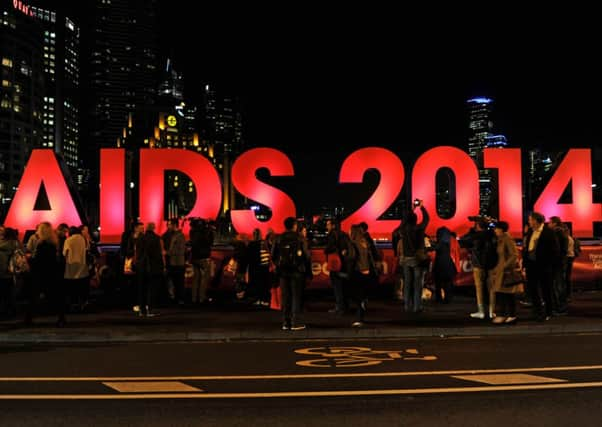Stigma is still the greatest hurdle for HIV


The long journey from Melbourne got me thinking. I had spent a week attending the International AIDS Conference in arguably Australia’s most vibrant state capital. Now, far too many thoughts were buzzing around in my head.
Fourteen thousand delegates from across the globe had descended upon Jeff’s Shed – the gargantuan conference centre built by Victoria’s premier, Jeff Kennett, in the 1990s.
Advertisement
Hide AdAdvertisement
Hide AdI was there as chair of the Church of Scotland HIV Programme, whose role is to alert congregations to issues surrounding HIV while encouraging them to raise funds for partner projects at home and overseas.
Projects involve community education and awareness; offer practical, psychological and spiritual support; care for orphans and vulnerable children, and challenge stigma and discrimination.
Diverse professions descended upon Melbourne: the researchers and clinicians, the politicians and religious leaders, the sex workers and the police chiefs, forming a curious range of fluid coalitions. This event was part academic festival, part protest camp, part mardi gras. We were there to consider “Stepping up the pace” – the conference theme which would dominate so many of our discussions.
From plenaries to group discussions, the same message was heard again and again: the time has come for the world to choose one of two ways forward.
Are we to accelerate global action in tackling HIV once and for all, or will we rather press the button marked “cruise control”?
Today’s decision would have very marked consequences for tomorrow’s outcomes.
Flying home, I had time on my hands and a picture in my head. I saw a seesaw – its great quality, of course, its ability to pivot in opposite directions, its fulcrum a double tipping point.
Right now, the world’s HIV seesaw could go either way. Many experts agree that stepping up the pace of globally targeted action might well see a startling decline in the virus’s prevalence across the world, as co-ordinated programmes combine to promote prophylaxis, treatment, sanitation, education, inclusion and decriminalisation, to name just some of the prime issues.
Advertisement
Hide AdAdvertisement
Hide AdTip the seesaw in the direction of greater investment in proven areas of activity, and the outcome might be more meaningful control of HIV throughout the world. Eradication? Probably not. Control of viral spread? Just possibly.
But, if the world’s public and private funders decide that sufficient cash is already going into the pot labelled HIV, a different tipping point could quickly be reached.
While today’s large scale investment in antiretroviral (ARV) medication is giving millions of people the security of healthy living well into the future, failure to move up from today’s funding levels risks endangering the hard-won achievements of the previous decade.
The last ten years have seen people starting to speak with real hope about living with HIV, instead of dying with Aids. Faced with a stalled HIV response, within a generation we might easily find record levels of HIV in our world, and little realistic chance of reducing it in the short term.
Identifying and then targeting HIV “hotspots” across the world certainly is one the way to go. Whether we are talking of at-risk drug-injecting young people in Eastern Europe or of marginalised communities in the United States, each presence of HIV has its own particular qualities and challenges, requiring equally particular modes of action in its locality.
The challenges are considerable, yet the fact remains that the world has now arrived at a point where it could turn the corner on HIV, even with the development of neither vaccine nor cure. To achieve this corner-turning moment, many simple interventions need to be stepped up, region by region, group by group, as need might dictate: free availability of ARVs for all in danger of contracting the virus (as well as for all who currently live with it); condom and lubricant provision for both men and women; freely available circumcision clinics… he list goes on and on.
Unsurprisingly, perhaps, the greatest challenge in the struggle against HIV remains lack of understanding – a fact brought out in the title of Norman Fowler’s excellent book, AIDS: Don’t Die of Ignorance.
For as long as people allow themselves to harbour stigmatising attitudes to others, the virus will be kept very neatly out of sight and out of mind – just where it needs to be if it is to thrive.
Advertisement
Hide AdAdvertisement
Hide AdMaybe one day we will no longer need to find world-class venues such as Jeff’s Shed to host global gatherings on HIV.
May we come to recognise the need to step up the pace on HIV. And may we do so soon.
• Rev Dr Robin Hill is convener of the Church of Scotland HIV Programme. World Aids Day is on 1 December